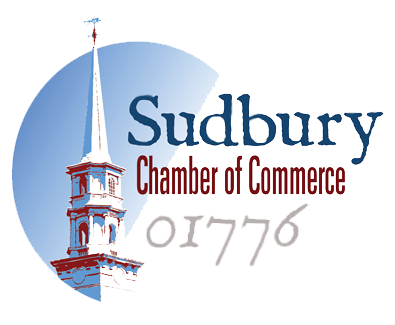The Town of Sudbury
Photo by Stuart Beeby Photography
More than 10,000 acres of Sudbury still belong to forests, crops, and pastures, making the town seem much farther than its 22 miles west of Boston. Reminders of the town’s earlier farming days are evident in the old barns, wells, stone walls, pastures, and roads which follows the lay of the land, not a designer’s plan. Most homes here sit on large lots, making gardening a popular warm-weather pastime.
Though the town’s population grew about 10% each year from 1970 – 1975, the density per square mile is one of the lowest in this region of the state.
Public recreation facilities and conservation land are distributed over more than 100 acres, including facilities for swimming, ice skating, shuffleboard, exercise tracks, cross country skiing, fishing, boating, tennis courts, bridle trails, softball, baseball, football, and soccer fields (memberships to private golf, swim and tennis clubs are also available). The town sponsors well-organized scouting and Little league programs, Pop Warner football, youth hockey, junior ski, soccer, and basketball programs. Adults can enjoy Sudbury’s Newcomer’s Club (which also welcomes “old comers”), Garden Club, Professional Women’s club and a local theater group.
Sudbury Schools
The Sudbury public school system is composed of two independent entities, Elementary (encompassing kindergarten through eighth grades) and the Regional High School (run jointly with the town of Lincoln). Each has separate operating budgets, administrators and a principal or superintendent. Nonetheless, the administrations strive to cooperate with each other, working in tandem to provide the continuity for a smooth transition from the elementary levels to high school. The entire system incorporates seven buildings, housing six schools, and a business/administrative office, and employs nearly 200 certified teachers.
There are four elementary schools and one middle school within the Sudbury School Commission, with business offices located at 40 Fairbanks Road in the Fairbanks Center. Due to substantial increases in enrollments, Nixon, Haynes, Noyes and Loring schools serve grades K – 4, while the Curtis Middle School now includes grades 5 through 8. The K-8 system offers a traditional core curriculum and a number of special programs such as “Catalyst” for gifted students and computer literacy.
The Lincoln Sudbury School Committee oversees both Lincoln-Sudbury Regional High School and L-S West, an alternative school for special needs students. Both are run jointly by the towns of Sudbury and Lincoln. The school is accredited through the New England Association of Schools and Colleges, Inc. and the Massachusetts Department of Education. The four-year public high school enrolled 1,137 students for 1994-1995, including students from Boston in the METCO Program. Students at Lincoln Sudbury may choose from college preparatory classes and an entry-level vocational training curriculum.
Along with standard graduation requirements, students may choose from a wide variety of specialized studies, much like collegiate course choices. More than 75% of the L-S student body takes advantage of a wide array of extracurricular activities, including 44 different interscholastic team sports, foreign language clubs, literary and history journals, drama, band, yearbook and newspaper staffing, and school-sponsored international travel. The high school also sponsors a
diversified evening Adult Education Program.
Boston and The Metro West Area
Photo by Stuart Beeby Photography
The Mass Department of Education maintains an excellent page of information on Sudbury’s school system.
There is no other region of our country that can boast the variety of recreational, cultural, industrial, and educational opportunities that exist here in New England. Active and staid, invigorating and relaxing, ancient and modern, agricultural and industrial, traditional and revolutionary – a land of contrasts. Within the borders of the state are vast ocean beaches and scenic mountains, apple orchards, and silicon valleys, sleepy cow towns, and bustling cities, producing diversity in culture, lifestyle, commerce and climate.
The oldest urban center in the New World, Boston is unique in its history and composition. Unparalleled cultural and historic institutions, prestigious universities, a thriving business center,
heavily visited tourist sites, and ethnic neighborhoods all coexist. “America’s college town,” boasting more than 200 institutions of higher learning and many of the world’s most respected Universities, Boston hosts a student population that keeps the city’s outlook young and fresh in ironic contrast to its historic cobblestoned streets. Medical innovation, high technology leaders, and some of the countries oldest and most prosperous industrial, commercial and financial institutions bolster a thriving economy. A hotbed of political activity since The Revolution, producing many famed leaders along the way.
Photo by Stuart Beeby Photography
An endless variety of museums, theaters, galleries, and musical venues bring nightlife and cultural pursuits to new heights. And how about those Red Sox, Celtics, Bruins, and Patriots! The street vendors in Haymarket, the old brownstones, the wharves lining the harbor, the gold-domed state house, the rowers in the Charles River on a spring morning – Boston’s history and beauty are without parallel.
Just 20 minutes west of this world-class city, the MetroWest region stretches out – for the most part, residential and agricultural. Sudbury is at the heart of the MetroWest area, halfway between Boston and Worcester, encircled by Routes 128 and 495, and dissected by Route 20 (the Boston Post Road), and Interstate 90 (the Mass Pike).
The commute to Boston from here is an easy one, as are the parking lots of any one of the hundreds of businesses located within our renowned “technology belt of America.” Although urban business and entertainment areas are easily accessible, the area retains a relaxed rural and agricultural flavor. Rich in colonial history, many landmarks still stand. Due west, an equal distance as to Boston, you will find Worcester, the third largest city in the state, and home to even more colleges, museums, and businesses.



